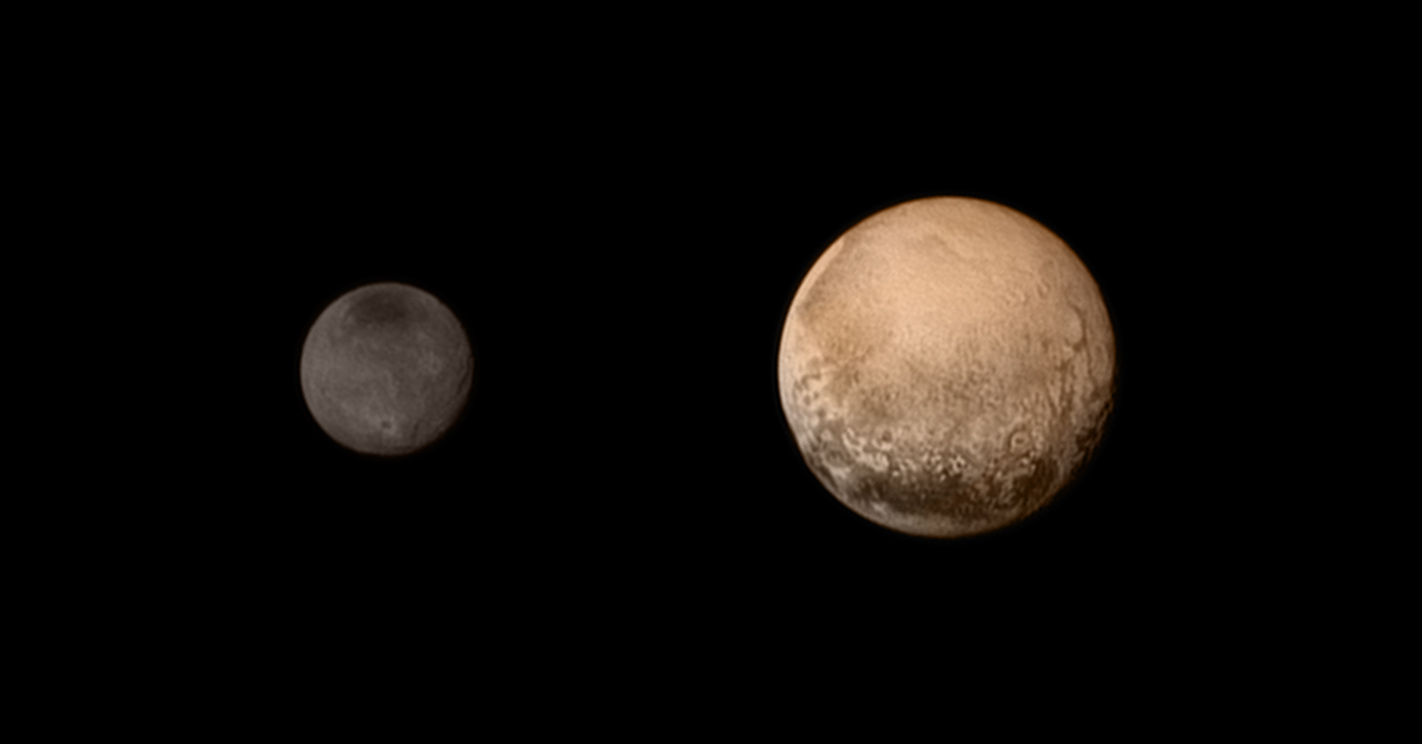Plutophiles everywhere rejoice. On the eve of history’s first ever up close flyby of mysterious Pluto on Tuesday morning July 14 making the first detailed scientific observations, NASA’s New Horizons has made a big discovery about one of the most basic questions regarding distant Pluto.How big is it?
Measurements by New Horizons gathered just in the past few days as the spacecraft barrels towards the Pluto planetary system now confirm that Pluto is indeed the biggest object in the vast region beyond the orbit of Neptune known as the Kuiper Belt.

Pluto is thus the undisputed King of the Kuiper Belt!
Pluto measures 1,473 miles (2,370 kilometers) in diameter, which is at the higher end of the range of previous estimates.
The big news was announced today, by New Horizons principal investigator Alan Stern of the Southwest Research Institute, Boulder, Colorado, during a live media briefing at Pluto mission control at the Johns Hopkins University Applied Physics Laboratory (APL) in Laurel, Maryland.
“This settles the debate about the largest object in the Kuiper Belt,” Stern noted.
Pluto is bigger than Eris, another big Kuiper Belt object discovered in 2005 by Mike Brown of Caltech, which is much further out from the Sun than Pluto. The discovery of Eris further fueled the controversial debate about the status of Pluto’s planethood.
Eris comes in second in size in the Kuiper Belt at only 1,445 miles (2,326 km) in diameter.
Stern also noted that because Pluto is slight bigger than the average of previous estimates, its density is slightly lower than previously thought. Therefore the fraction of ice in its interior is slightly higher and the fraction of rock is slightly lower. But further data is required to pin the density down more precisely.
The uncertainty in Pluto’s size has persisted for decades and was due to the fact that Pluto has a very tenuous atmosphere composed of nitrogen.
Furthermore Pluto’s lowest atmospheric layer called the troposphere, is shallower than previously believed.
On the other hand, its largest moon Charon with which it forms a double planet, lacks a substantial atmosphere and its size was known with near certainty based on ground-based telescopic observation.
New Horizons LORRI imagery has confirmed that Charon measures 751 miles (1208 km) kilometers) across.
Stern also confirmed that frigid Pluto also has a polar cap composed of methane and nitrogen ices based on measurements from the Alice instrument.
LORRI has also zoomed in on two of Pluto’s smaller moons, Nix and Hydra.
“We knew from the time we designed our flyby that we would only be able to study the small moons in detail for just a few days before closest approach,” said Stern. “Now, deep inside Pluto’s sphere of influence, that time has come.”
But because they are so small, accurate measurement with LORRI could only be made in the final week prior to the July 14 flyby.
Nix is estimated to be about 20 miles (about 35 kilometers) across, while Hydra is roughly 30 miles (roughly 45 kilometers) across. These sizes lead mission scientists to conclude that their surfaces are quite bright, possibly due to the presence of ice.
Determinations about Pluto’s two smallest moons, Kerberos and Styx, will be made later at some point during the 16-month long playback of data after the July 14 encounter.
It has been three decades since we last visited planetary bodies at the outer reaches of our solar system when Voyager 2 flew past Uranus and Neptune in 1986 and 1989.
New Horizons is closing in fast on its quarry at a whopping 31,000 mph (49,600 kph) after a nine year interplanetary voyage and is now less than half a million miles away, in the final hours before closest approach.
The New Frontiers spacecraft was built by a team led by Stern and included researchers from SwRI and the Johns Hopkins University Applied Physics Laboratory (APL) in Laurel, Maryland. APL also operates the New Horizons spacecraft and manages the mission.


